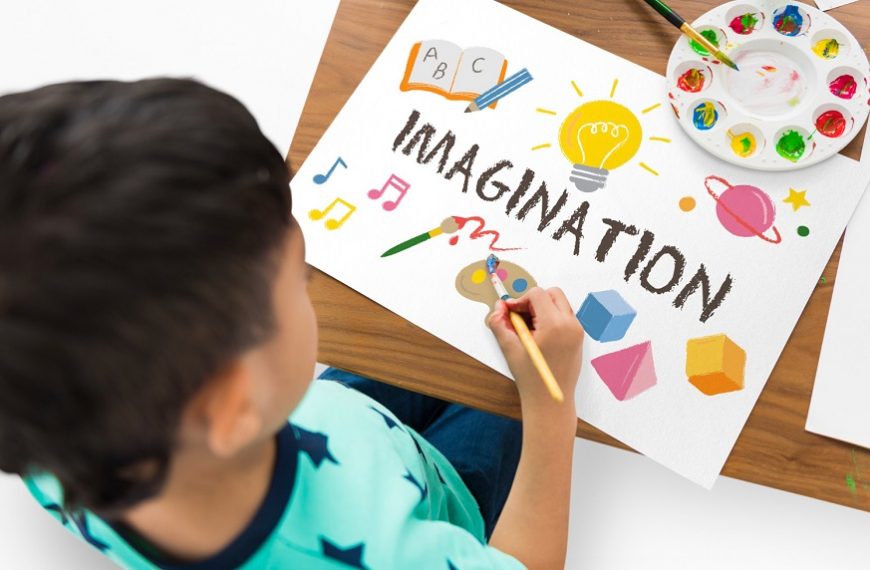Fostering Creativity & Imagination in Children
In an ever-evolving world, fostering creativity and imagination in children is no longer just a whimsical notion, but a fundamental skill that prepares them for the future. The ability to think creatively, to imagine different possibilities and solutions, is becoming increasingly crucial as traditional job roles are continually reshaped and replaced by innovation and automation. So, the question that arises is: how do we develop creativity skills in our children?
As we delve into this topic, let’s begin by understanding that creativity is not limited to artistic abilities or original ideas. It extends to problem-solving, critical thinking, and a willingness to explore different avenues of thought. It’s also about promoting a culture of curiosity and imagination in children’s development, allowing them to see the world from various perspectives.
Methods to Foster Creativity and Imagination in Children:
Encourage Curiosity:
Fostering creativity begins with nurturing an insatiable curiosity. Ask open-ended questions like ‘What do you think happens when…?’ or ‘How would you do it differently?’ This encourages your child to think outside the box, which is a crucial step in learning how to develop creativity skills.
Provide a Creative Environment:
Creating a conducive environment for imagination and creativity is essential. This involves setting up a space with art supplies, building blocks, costumes for role play, and books of different genres. These resources provide stimuli for the children’s imagination to explore and build upon.
Promote Diversity in Play:
Variety is the spice of life, and it’s especially vital in fostering creativity and imagination in children. Try to provide a mix of structured and unstructured play, indoors and outdoors. A balance of guided activities and free play encourages children to learn, explore, and think creatively.
Embrace Mistakes:
In the journey of fostering creativity, mistakes should not be seen as failures, but as learning opportunities. Encouraging children to take risks and not fear mistakes helps them to push boundaries and find creative solutions.
Benefits of Fostering Creativity and Imagination
When we talk about fostering creativity and imagination in children, we’re referring to more than just enabling them to think of new ideas or become good problem solvers. These creative skills have a broad and multifaceted impact on a child’s overall development, positively influencing their cognitive, emotional, and social abilities.
Enhanced Cognitive Development:
Cognitive development refers to how children perceive, think, and gain an understanding of their world through the interaction of genetic and environmental factors. When we teach children how to develop creativity skills, we’re inviting them to explore the world around them, ask questions, make connections, and form a deeper understanding of their surroundings. This type of exploration encourages children to become active learners, which, in turn, enhances their cognitive development.
Fostering creativity also develops children’s problem-solving skills. When a child is encouraged to be creative, they learn to think outside the box, consider various outcomes, and make connections between unrelated ideas. This process is fundamental for logical thinking and complex problem-solving.
Emotional Growth:
Creativity is an excellent avenue for children to express their emotions. Through different creative activities for kids, they can articulate their feelings in ways they might struggle to do verbally. Whether it’s drawing a picture, writing a story, or role-playing a scenario, these activities help children understand and express their emotions, fostering healthy emotional development.
Moreover, creative activities often involve trial and error. By engaging in these activities, children learn that it’s okay to make mistakes. This understanding helps to build their resilience, improves their ability to cope with failure, and encourages a positive attitude toward learning.
Social Skills:
Imagination in children’s development plays a critical role in enhancing social skills. Imaginative and role-playing games often require children to put themselves in someone else’s shoes. This practice cultivates empathy, as children learn to understand and respect diverse viewpoints. Such empathy and understanding are foundational in building strong social relationships.
Furthermore, many creative activities for kids can be collaborative, promoting teamwork and cooperation. Whether it’s a group art project, a band practice, or a theater play, these cooperative experiences teach children how to communicate, negotiate, lead, and listen to others.
Academic Success:
While creativity and imagination are often seen as abstract skills, they have concrete applications in academic success. Creativity encourages curiosity and motivation to learn, traits that are strongly linked to academic achievement. Moreover, creative children are better at thinking critically, a skill that enhances their ability to analyze academic problems and come up with effective solutions.
Preparing for the Future:
Fostering creativity and imagination equips children for the future. In a rapidly changing world where new jobs are being created and old ones are becoming obsolete, creativity is one of the key skills that will enable them to adapt and thrive. It’s not just about creating artists or writers, but about raising innovative thinkers and problem solvers who can navigate the complex challenges of the future.
Creative Activities for Kids
Here are a few creative activities for kids that can stimulate their imagination and enhance creativity:
Storytelling Sessions:
Storytelling sessions are a fantastic way to ignite imagination in children’s development. You can start by narrating a story and then encourage your child to add their unique twists and turns. This activity not only improves their listening skills but also fosters creative thinking.
Art and Craft Projects:
Artistic activities provide a hands-on experience that fosters creativity and allows kids to express themselves. From painting to sculpting with clay activities help children experiment with colors, shapes, and textures.
Role-Playing Games:
Role-playing is another fantastic way of fostering creativity. This form of imaginative play allows kids to explore different roles, helping them understand various perspectives and enhancing their empathetic skills.
DIY Science Experiments:
Science experiments can be a fun way to foster creativity and imagination. These activities allow kids to explore cause-and-effect scenarios, solve problems, and think logically, all while nurturing their creativity.
Conclusion:
Learning how to develop creativity skills in our children is an ongoing process, but one that is filled with rewarding moments and joyous discoveries. The key lies in encouraging curiosity, providing the right resources, embracing mistakes, and incorporating varied creative activities for kids. As we foster creativity and imagination in our children, we are not just equipping them with skills for the future but also helping them to lead a fulfilling, enriched life.
And at EuroKids Preschool, we are committed to providing a nurturing atmosphere for the little ones to develop their creative skills and imagination. So, visit our website to find the nearest EuroKids Preschool in your area and kick start an incredible academic journey for your child.















